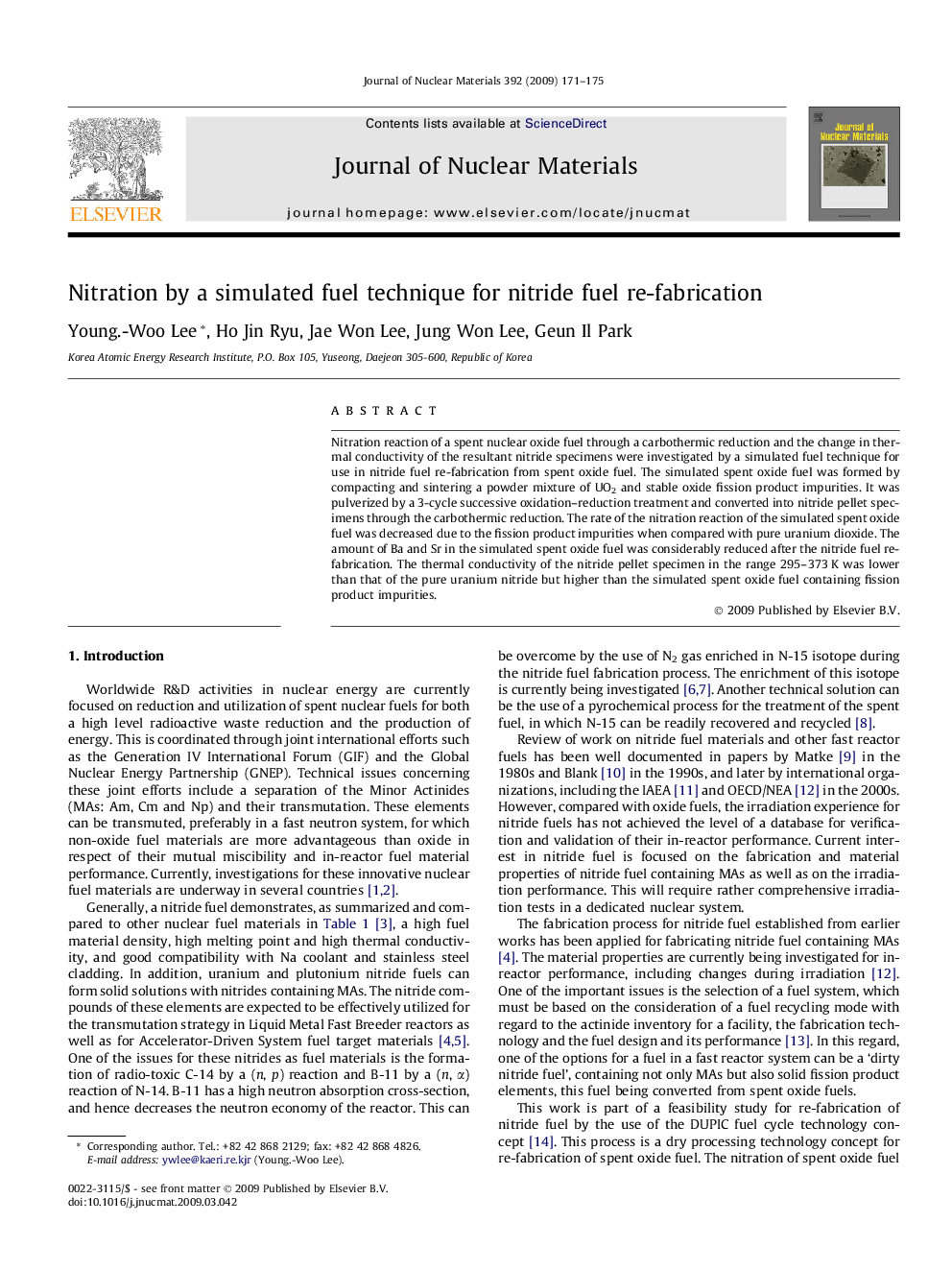| Article ID | Journal | Published Year | Pages | File Type |
|---|---|---|---|---|
| 1568407 | Journal of Nuclear Materials | 2009 | 5 Pages |
Abstract
Nitration reaction of a spent nuclear oxide fuel through a carbothermic reduction and the change in thermal conductivity of the resultant nitride specimens were investigated by a simulated fuel technique for use in nitride fuel re-fabrication from spent oxide fuel. The simulated spent oxide fuel was formed by compacting and sintering a powder mixture of UO2 and stable oxide fission product impurities. It was pulverized by a 3-cycle successive oxidation-reduction treatment and converted into nitride pellet specimens through the carbothermic reduction. The rate of the nitration reaction of the simulated spent oxide fuel was decreased due to the fission product impurities when compared with pure uranium dioxide. The amount of Ba and Sr in the simulated spent oxide fuel was considerably reduced after the nitride fuel re-fabrication. The thermal conductivity of the nitride pellet specimen in the range 295-373Â K was lower than that of the pure uranium nitride but higher than the simulated spent oxide fuel containing fission product impurities.
Related Topics
Physical Sciences and Engineering
Energy
Nuclear Energy and Engineering
Authors
Young.-Woo Lee, Ho Jin Ryu, Jae Won Lee, Jung Won Lee, Geun Il Park,
